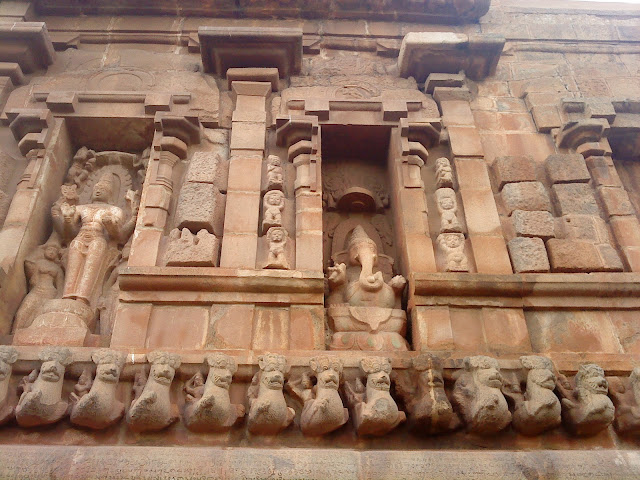Books & Editorials on The Big Temple
For the Cholas, temple building was not merely an outpouring of artistic talent but also away of life, for the entire fabric of the society was woven round the temple.
Built by the greatest of Chola rulers, Rajaraja, the temple was named after him as Rajarajesvaram, meaning `the temple of the Isvara (God) of Rajaraja'. Later on, it became known as the Brihadisvara temple meaning the temple of the `Great Isvara'. But, in fairness to the great king who visualized and had this structure built, I have, following my father, adhered to the original name
I have chosen this subject, not merely because of my general interest in and involvement with art history of the Cholas for over three decades along with my illustrious archaeologist father, but also because no painstaking attempt has yet been made by any scholar to place all this treasure of information in a single capsule for the scholar or the traveller.(from the preface)
As a member of the conservation wing of the Archaeological Survey of India, the author has intimate knowlege of the several steps taken to preserve the temple in its original beauty. The author of this book does not claim to present any new discoveries but recounts in simple language all the outstanding features for which the temple has become renowned.
The ancient Indian science of Vaastu Shastra finds fullest expression in this magnificent edifice and Sthapati has elucidated in as simple terms as possible the science that has gone into its making, which makes an interested reading for seasoned readers as wells as newly initiated aspirants.
These sites, which are not easy to visit, were photographed 50 years ago by the Koviloor Swamy. He used an ancient 5"x4" Linhof camera for the Archaelogical Survey of India (ASI) The best paintings are found inside the vimana in the Brihadishvara temple at Thanjavur. The delicate nature of the paintings and the gradual erosion due to pollution have resulted in the ASI locking them up. Today they can only be seen by special permission. The paintings depict scenes from the Shiva Purana. But the elaborate tableaux of domestic, public and palace scenes are an excellent source of information about the Chola period and the court of Rajaraja, who commissioned them.




 In the rear side of the gopuram one can see Krishna Leela, MahaVishnu in the first stage, Narasimha combating with Hiranyakasibu in one side and Hiranya Samkara on the other side. On the top stage Shiva and Vishnu idols are seen.
In the rear side of the gopuram one can see Krishna Leela, MahaVishnu in the first stage, Narasimha combating with Hiranyakasibu in one side and Hiranya Samkara on the other side. On the top stage Shiva and Vishnu idols are seen.
 Rajaraja Chola I ( 985 to 1015 CE) was an unequalled monarch who ruled the entire Southern part of India over thousand years ago, whose greatness and glory can still witnessed by the world by his magnum opus the Brahadeswara Temple in Thanjavur.
Rajaraja Chola I ( 985 to 1015 CE) was an unequalled monarch who ruled the entire Southern part of India over thousand years ago, whose greatness and glory can still witnessed by the world by his magnum opus the Brahadeswara Temple in Thanjavur.






























